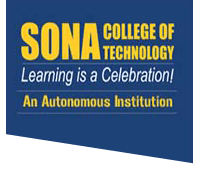Centre for Study on Rainfall & Radio wave Propagation
Deputation Report of Dr. Rajasri Sen Jaiswal to Iceland
Dr. Rajasri Sen Jaiswal, Head, CRRP and Professor, Physics and Sunakshi Jaiswal, final year ECE student of Sona College of Technology had presented two research papers in the 6th International Conference on Climate Change: Impact & Response, Iceland University, Reykjavik during 27-28 June 2014. The first paper is “Finding signature of climate change in meteorological elements: Study of cloud liquid water, precipitation water and latent heat”, co-authored by the CRRP staff. The second paper is “Attenuation of TRMM channel over Salem”, co-authored by Sunakshi Jaiswal.
Dr. Rajasri Sen Jaiswal has received international travel grant from Indian National Science Academy (INSA) and Sona College of Technology to go to Iceland. The travel grant of Sunakshi Jaiswal is borne by Dr. Rajasri Sen Jaiswal.
- Summary of the scientific contribution by the deputed scientist including any special discussion points at the conference.
It is high time now to recognize the alarming signals of climate change, since many parts of the globe have already started witnessing its fury. A knowledge in the process of climate change probably may help the community to fight against it. Hoping that climate change is leaving its footprint in the meteorological elements, we have studied some of these, viz., the rainfall and temperature; cloud liquid water (CLW), precipitation water (PW) and latent heat (LH) from the Earth’s surface up to a height of 18 km above, over a few stations in India, namely, Vishakhapatnam, Mumbai, Chennai, Kolkata, Trivandrum, Machilipatnam, Panjim, Puri, Karaikal and Goa. We have also investigated these parameters in the latitudinal belt of 35N-35S.
The CLW, PW and LH values are obtained from the data product 2A12 of the Tropical Microwave Imager (TMI) onboard the Tropical Rainfall Measuring Mission (TRMM) satellite for the period 1999-2008. The surface temperature values are obtained from the National Oceanic and Atmospheric Administration (NOAA). The rainfall values are obtained from the India Meteorological Department (IMD).
The monthly and yearly variations in CLW, PW and LH; their variations in the pre monsoon, monsoon and post monsoon season have been studied. Effort has been made in particular, to find out whether the change in these quantities has any effects on the surface temperature and rainfall. An effort has been made in particular, to find out whether the same trend is exhibited in the variations in rainfall and surface temperature; and these quantities. Effort has been made to find out the impact of these quantities on the number of occurrence and intensity of cyclones and storm surges. Further, the variations of CLW, PW, LH, ST and rainfall with latitude have also been investigated.
Important conclusions of the paper “Attenuation of TRMM channel over Salem”
- Use of vertical polarization is suggested instead of horizontal polarization as a mitigation technique to rainfall attenuation.
- Use of higher elevation of Earth’s station to satellite will lower rainfall attenuation.
- As at lower frequencies attenuation is found to be lower, the link designers may have to compromise between the rate of transmission and attenuation, choosing a comparatively lower frequency.
Recommendation / conclusions arrived at the conference.
o In order to facilitate stronger interaction among scientists, it was proposed that the conference may be conducted in future for more number of days, instead of just two days.
o An appeal was kept before the organizers to fix different registration fee for participants from different countries. This will help developing country scientists to participate in such conferences.
o It was proposed that instead of parallel sessions, if all the sessions may be conducted in a single hall, then all participants will be benefited.
o It was felt that in order to have effective mitigation techniques against climate change, the scientists, policy makers, oil and gas companies, the politicians –all have to work together.
The deputed scientist Dr. Rajasri Sen Jaiswal had discussion with Dr. Sambhudas Choudhury, Senior Geologist at the Climate Restoration Technologies, Inc. and his group. They have presented an idea that the level of carbon-di-oxide can be brought down drastically to a very low value by 2070 by growing algae over the oceans. Dr. Choudhury had expressed his wish to work with the CRRP, Sona College of Technology and other research institutes in relation to the above project, if possible. In addition to this, after Dr. Rajasri Sen Jaiswal’s presentation, Dr. Choudhury had suggested that the difference in atmospheric characteristics under severe weather conditions, in the west coast and east coast of India, as reported by Dr. Sen Jaiswal, may be due to emission of different types of gases from the Bay of Bengal and the Arabian Sea. He suggested to pursue further investigations using satellite data.
Dr. Sen Jaiswal had requested the organizer of climate change conference to organize a forum/conference, if possible, wherein the scientists from different countries will share the impacts of climate change in their respective countries. This idea was highly appreciated by the audience. One scientist from the U.S. had expressed his wish to jointly work with the CRRP, Sona College of Technology in this context.


